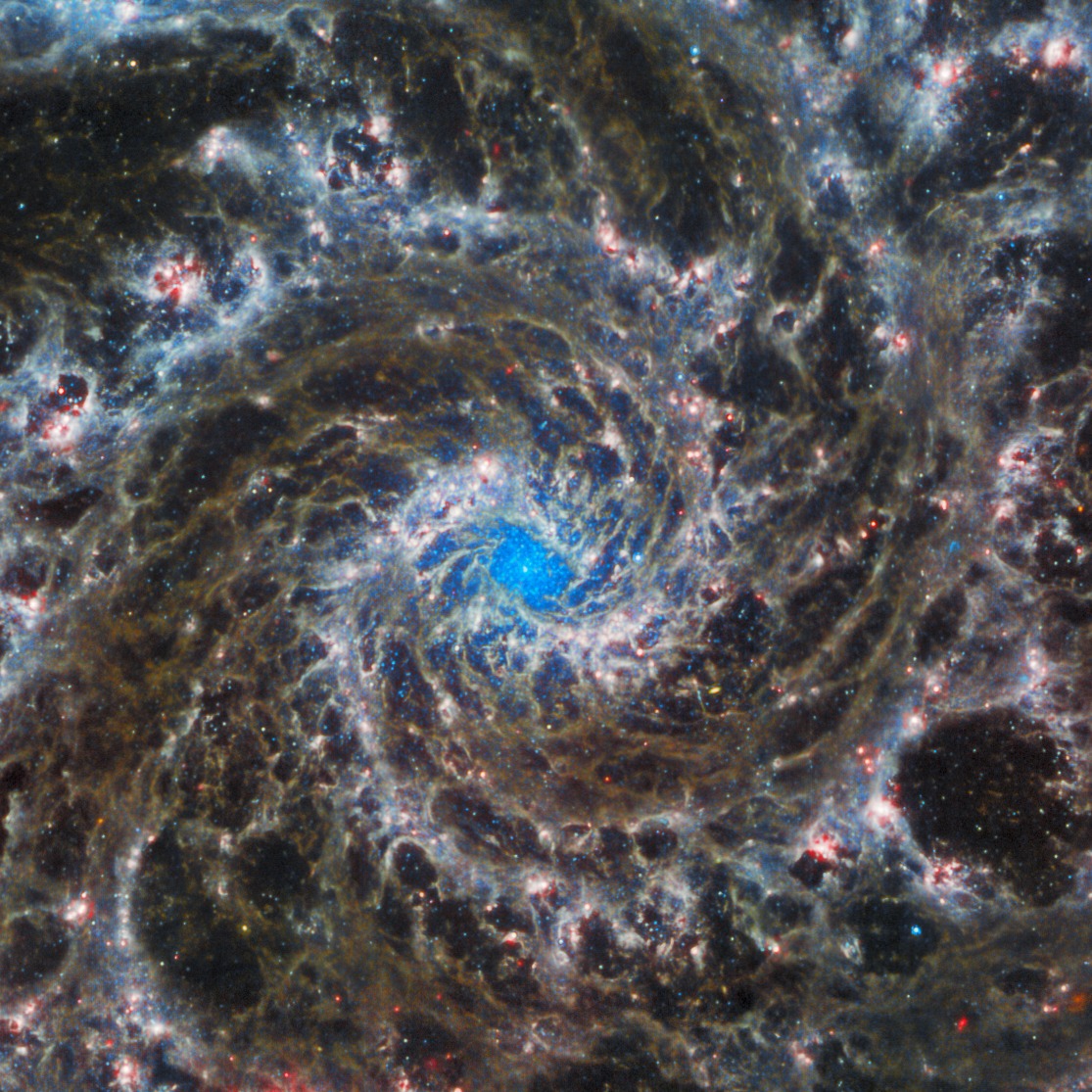Rapper Killer Mike taken away from Grammy Awards in handcuffs
2 months ago

Photo: NASA's James Webb Space Telescope/Facebook
The James Webb Telescope captured this image that shows the heart of the Phantom Galaxy, which is officially known as M74. The stunning image reveals the delicate filaments of gas and dust in the spiral arms of the galaxy. The lack of gas at the center of the galaxy also provides a view of the nuclear star cluster.
The Phantom galaxy is classified as a “grand design spiral,” which means that it has prominent and well-defined spiral arms, which is not the case for all spiral galaxies as some have patchy and ragged structures.
M74 is approximately 32 million light-years away from Earth in the Pisces constellation. It also lies almost face-on to Earth. Its position with respect to our planet and its well-defined spiral arms makes it a great target for astronomers studying the origin and structure of galactic spirals.
The Webb telescope observed M74 with its Mid-InfraRed Instrument (MIRI) to help scientists learn more about the earliest phases of star formation in our local universe. These Webb observations are part of the PHANGS (Physics at High Angular resolution in Nearby GalaxieS) collaboration’s efforts to study neighboring star-forming galaxies.
These observations by Webb will be used by astronomers to measure the masses and ages of star clusters, gain insights into the nature of the small grains of dust drifting in interstellar space and pinpoint star-forming regions in these galaxies.
Previous observations of the Phantom Galaxy by Hubble had revealed bright areas of star formations, which are known as HII regions. Webb’s high sensitivity at infrared wavelengths is complemented by Hubble’s sharp vision at ultraviolet and visible wavelengths. Scientists can gain greater insight into astronomical objects by combining the data from multiple telescopes operating across the electromagnetic spectrum.
Leave A Comment